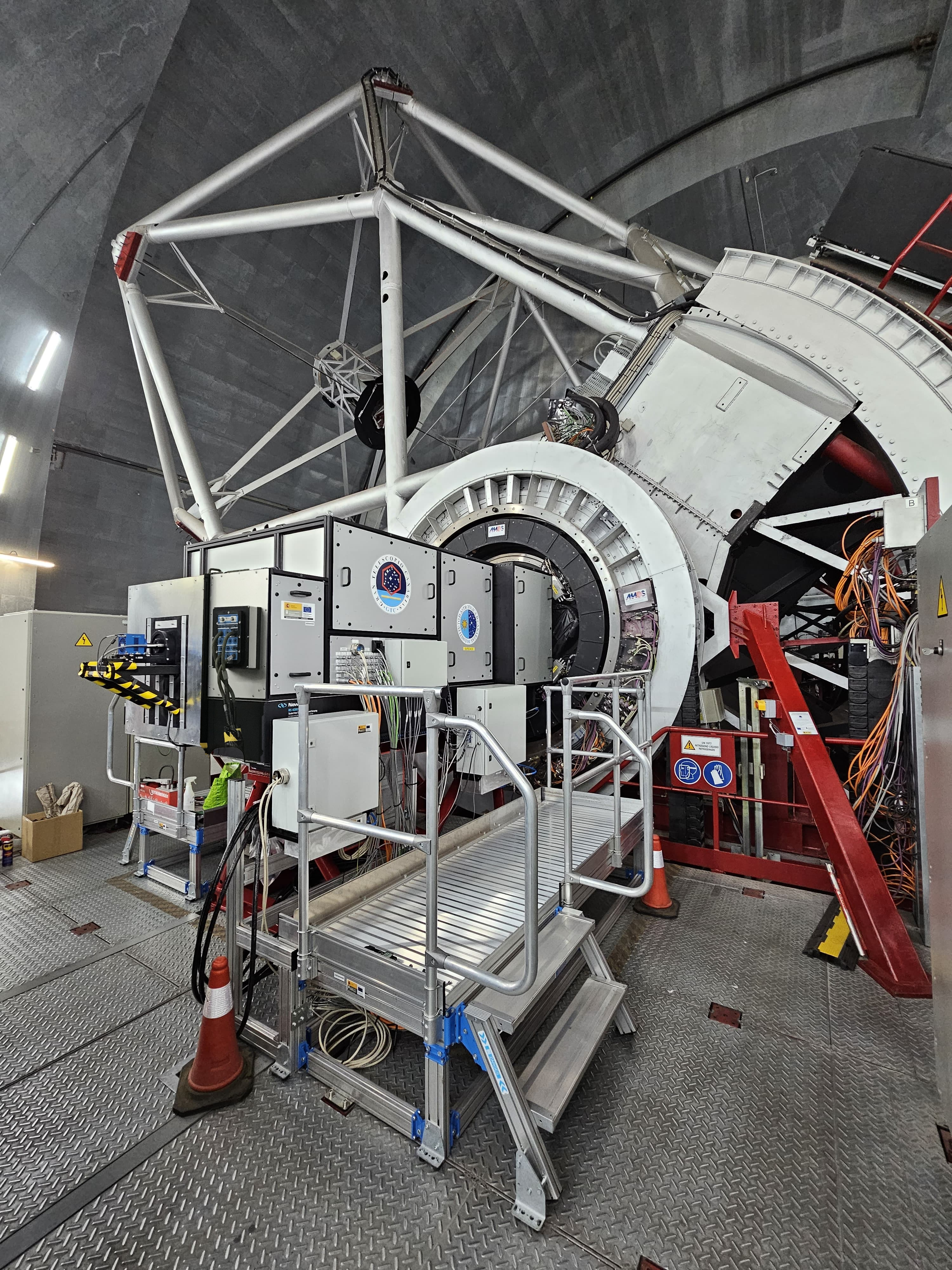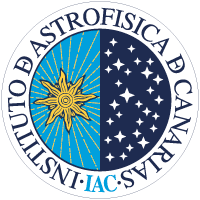Introduction
GTCAO is a post focal system situated on the Nasmyth platform B, which corrects the optical beam to feed the scientific instrument placed after it. GTCAO follows the classic design of an AO system with the use of two identical off-axis parabolas, maintaining the effective focal distance of the telescope. On Day 1, the system will provide a single deformable mirror conjugated to the telescope pupil and will use natural stars (NGS) for wavefront sensing.
The GTCAO system is expected to provide a corrected beam that will achieve a Strehl ratio of 0.65 in K-band with bright guide stars. The size of the transmitted field of view is 1.5 arcmin diameter and the optical layout of the system has been designed to be able to include, in the future, an atmospheric dispersion corrector (ADC) working up to 60º zenith angle in order not to degrade its performance with increasing zenith angle.
GTCAO employs a wavefront sensor of Shack-Hartmann type with 20x20 subapertures and a deformable mirror with 21x21 actuators. For tip-tilt correction it uses the GTC secondary mirror.
Future and planned upgrades will allow the system to increase the sky coverage, by the use of a Sodium laser guide star (LGS; see LGS extension at the end), and also to increase the size of the corrected field of view, by adding an additional wavefront corrector and a second deformable mirror conjugated to an altitude of approximately 10 Km. The LGS upgrade is already under development.
The first scientific instrument to use GTCAO will be FRIDA (inFRared Imager and Dissector for Adaptive optics), an integral field spectrograph in the near infrared with imaging capability.

View of GTCAO installed on GTC's Nasmyth B platform
Note: This project was partially funded by the European Regional Development Fund (ERDF) under the Programa Operativo de Canarias 2007-2013, Axis 1, Priority Theme 2, under Resolution No. 364 of November 25, 2014 of the Canarian Agency for Research, Innovation and Information Society (ACIISI), and under the Programa Operativo de Canarias 2014-2020, "Canarias objetivo de progreso".
It is pre-financed through a loan from the Spanish Ministry of Economy (State Secretary for Research), the support from the State Research Agency (AEI) of the Spanish Ministry of Science and Innovation (MICINN) and the European Regional Development Fund (FEDER) under grants with references EQC2018-005097-P, EQC2019-006713-P and ICTS-2019-03-IAC-12. We acknowledge support from the European Union Recovery and Resilience Mechanism – NextGenerationEU.
